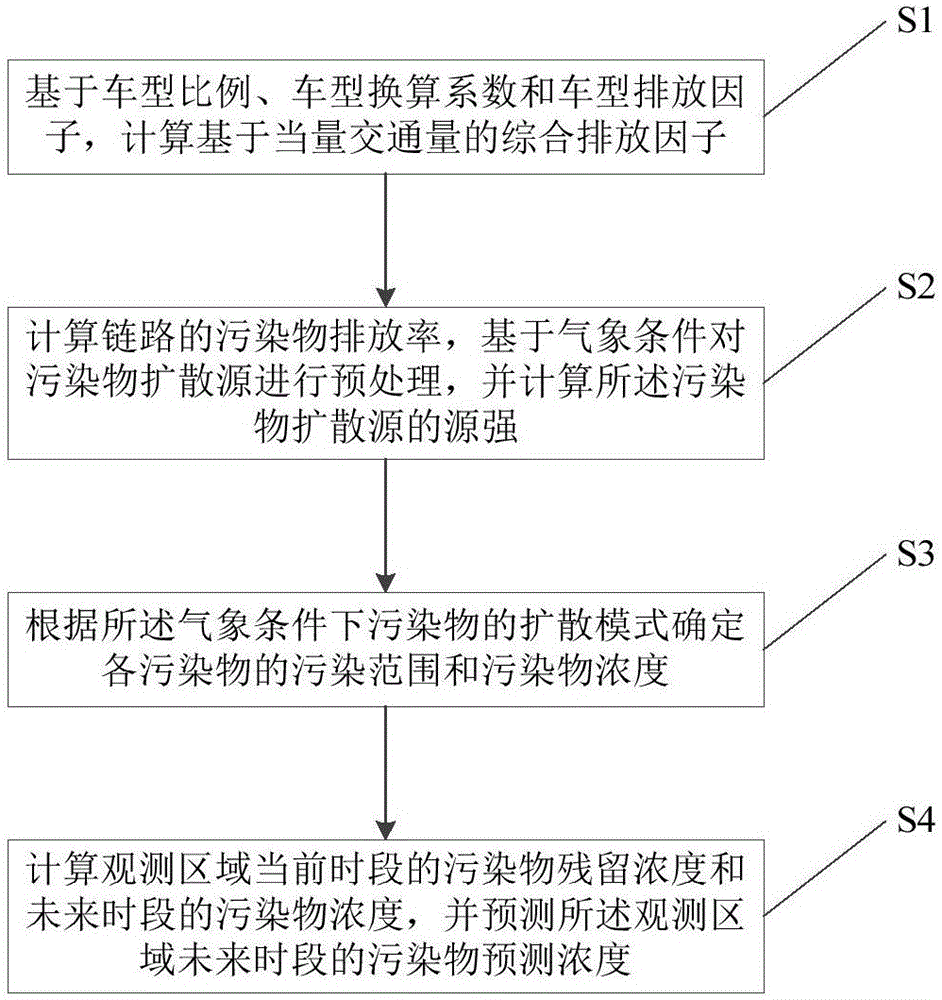Traffic air pollutant concentration prediction method and system based on meteorological condition
A technology for air pollutants and meteorological conditions, applied in forecasting, data processing applications, calculations, etc., can solve problems such as difficulty in obtaining a large amount of data, ignoring pollutant residues, and difficulty in accurately obtaining road traffic emissions.
- Summary
- Abstract
- Description
- Claims
- Application Information
AI Technical Summary
Problems solved by technology
Method used
Image
Examples
Embodiment Construction
[0114] In order to illustrate the present invention more clearly, the present invention will be further described below in conjunction with preferred embodiments and accompanying drawings. Similar parts in the figures are denoted by the same reference numerals. Those skilled in the art should understand that the content specifically described below is illustrative rather than restrictive, and should not limit the protection scope of the present invention.
[0115] One aspect of the present invention discloses a traffic air pollutant concentration prediction method based on meteorological conditions, characterized in that the method includes:
[0116] S1: Calculate the comprehensive emission factor based on the equivalent traffic volume based on the proportion of vehicle types, conversion factors of vehicle types and emission factors of vehicle types;
[0117] S11: Calculate the equivalent traffic volume based on the natural traffic volume according to the vehicle type ratio a...
PUM
 Login to View More
Login to View More Abstract
Description
Claims
Application Information
 Login to View More
Login to View More - R&D
- Intellectual Property
- Life Sciences
- Materials
- Tech Scout
- Unparalleled Data Quality
- Higher Quality Content
- 60% Fewer Hallucinations
Browse by: Latest US Patents, China's latest patents, Technical Efficacy Thesaurus, Application Domain, Technology Topic, Popular Technical Reports.
© 2025 PatSnap. All rights reserved.Legal|Privacy policy|Modern Slavery Act Transparency Statement|Sitemap|About US| Contact US: help@patsnap.com



